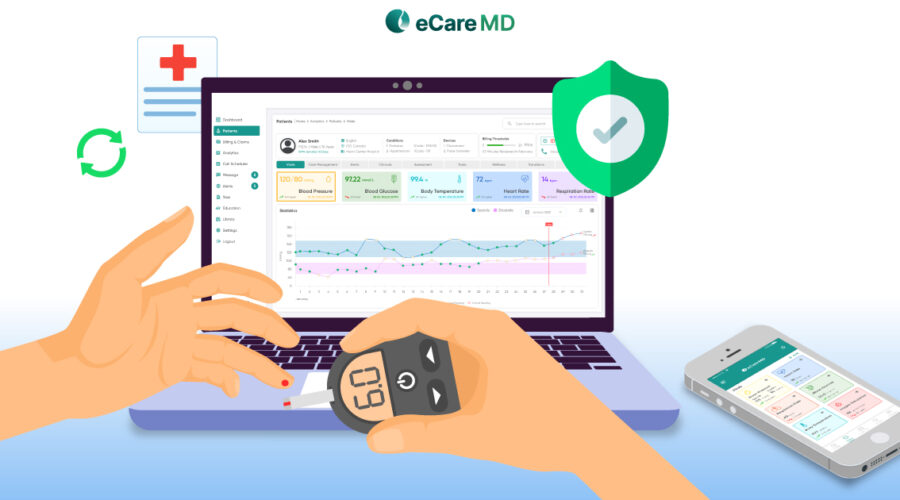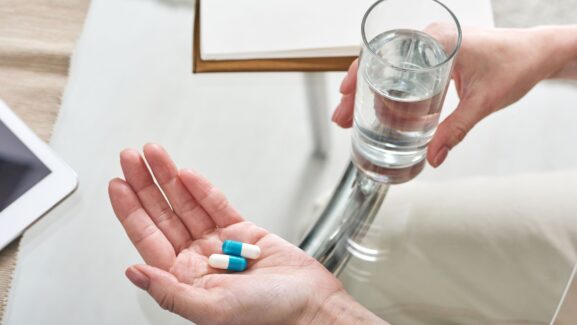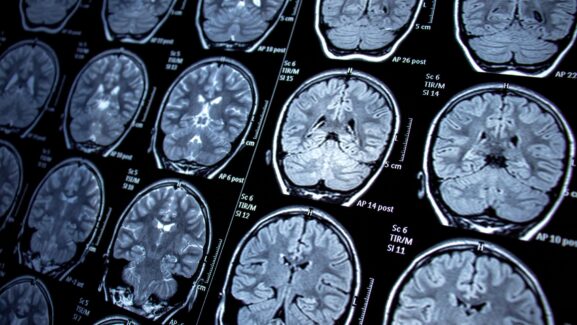There are reported 133 million people in the United States suffering from chronic diseases. Furthermore, it is common knowledge that treating chronic conditions is a long-term process where the patient needs to be continuously monitored and provided the utmost care.
As chronic disease management is becoming an important trend in the current healthcare landscape and this trend is here to stay. As the number of aging populations continues to increase, the need for monitoring and providing optimum care will also increase.
This has become an additional burden on the healthcare providers as they are already burdened and understaffed to provide optimal care to people. With a lot of things that are involved in treating chronically ill patients, the healthcare industry was trying to find a mid-way out to reduce the burden and also the financial pressure on patients for opting care.
This is the reason why the Center for Medicare and Medicaid introduced the Remote Patient Monitoring (RPM) program.
Being the game changer in the healthcare landscape, it not only enabled remote monitoring of patients but also gave patients more control of their health. In this blog, let’s see the benefits of remote patient monitoring for patients and how RPM improved chronic disease management.
Enhanced Self-management & Disease Control
While reading this, you might find it difficult to connect the dots between RPM and patient self-management, don’t you?
Well, let’s decode this!
Remote patient monitoring involves remote monitoring devices that are connected to the patient’s smartphones, which collect the patient’s vital data and transmit it to the providers’ system. This allows providers to continuously monitor vital signs like blood pressure, glucose levels, heart rate, etc., from the comfort of their homes.
This way, providers can access real-time data, which empowers patients to adjust medications accordingly and suggest the necessary lifestyle changes. On the other hand, the patients are actively involved in the collection of their own vitals and are more likely to adhere to the medications and treatment. In this way, remote patient monitoring helps in better chronic disease management and improves patient outcomes over a period of time.
Improved Communication & Collaboration with Caregivers
Since remote patient monitoring allows continuous monitoring, it facilitates regular data transmission to healthcare providers. This helps healthcare providers to analyze vital patient data in real-time and provide necessary diagnosis and treatment.
Along with that, remote patient monitoring also empowers data-driven healthcare practices which allows them to analyze the health patterns of patients and identify potential health issues. This way, remote patient monitoring provides healthcare professionals with enough tools to proactively intervene in their care journey and make necessary changes in the care plan to improve patient outcomes.
To enable this remote patient monitoring software comes with enhanced secure communication channels, which enables the entire care team to be on the same page and working together towards the same goal. With features like secure messaging, telehealth platform integration, RPM software encourages patients and providers to stay connected during their entire care journey.
Increased Independence & Quality of Life
Cost saving of remote patient monitoring programs is one of the major reasons why it has become so popular amongst patients. Furthermore, enabling the monitoring of patients from the comfort of their homes reduces the need for frequent in-person clinical visits and gives patients more control over their health.
Apart from that, by empowering patients to proactively collect their health vitals, it fosters a sense of self-reliance. This also helps them to understand their health and body better which increases patient engagement in their care journey.
Chronic conditions make it difficult for people to perform their day-to-day activities. The heavy medication doses further makes the situation worse. However, in remote patient monitoring this is overcome by keeping them in control of their health and improving their quality of life by making necessary lifestyle changes and improving their overall wellbeing.
Personalized Care & Tailored Treatment Plans
Everybody reacts to diseases in a very different way. That is the reason data-driven practices can prove to be pivotal in the patient’s care journey. Remote patient monitoring gives providers direct access to patient health data. With these valuable insights into a patient’s unique health patterns and trends, providers can easily curate personalized care plans and draw the treatment plan that helps the patient in improving their health outcomes.
Along with that, healthcare providers can leverage this data to understand how the patient’s body reacts to the chronic condition and the medication given to improve their condition. By further optimizing medication regimens the personalized treatment plan can be improved allowing care providers to provide the best possible treatment to their patients.
One of the major benefits of remote patient monitoring for patients is that it changes the nature of care delivery from reactive to proactive. This means that healthcare providers can use valuable insights from patient data to study health patterns and identify potential dangers before the health condition escalates. This way, healthcare providers can warn patients about their conditions and take effective preventive measures to improve health outcomes. Along with that, the predictive healthcare approaches also help healthcare providers in enhancing patient’s care journey with better care.
Conclusion
The key benefit of remote patient monitoring is that it gives patients enough control over their health and care journey. Furthermore, real-time access to patient data enables providers to take preventive care measures and change the nature of care delivery from reactive to proactive. All these care delivery measures come in handy to transform chronic disease management practices, where the focus is shifted to better care practices with personalized and patient-centric care delivery.
So, what are you waiting for? Transform your healthcare practice and start your digital transformation today. Click here to know how to get started with remote patient monitoring.
Frequently Asked Questions (FAQs)
- What is Remote Patient Monitoring?
Remote patient monitoring (RPM) utilizes digital tools to track a patient’s health data outside of a clinical setting, often in their home. This data, collected by devices like blood pressure cuffs or weight scales, is transmitted to healthcare providers for review. RPM helps manage chronic conditions, improve care, and potentially reduce healthcare costs.
- How does RPM benefit patients?
Remote patient monitoring (RPM) empowers patients with chronic conditions to track their health at home. This data helps them stay informed and allows doctors to intervene early on potential issues, reducing hospital visits and improving overall health management.
- Is RPM suitable for all chronic conditions?
Remote Patient Monitoring (RPM) is a great tool for many chronic conditions, but not all of them. It shines for conditions where you track vitals like blood pressure or weight (diabetes, heart disease). However, it might not be ideal for situations requiring physical exams or complex assessments.
- How secure is patient data in RPM systems?
The security of patient data in RPM systems can vary. There are common concerns like unauthorized access, data breaches, and insecure data transmission. To ensure strong security, look for RPM systems with features like encryption and access controls. It’s important to carefully evaluate any RPM system’s security features before using it.
- Is remote patient monitoring safe and secure?
Remote patient monitoring can be safe and secure, but it depends on the system’s security measures. There are risks like data breaches and unauthorized access to patient information. Strong encryption and authentication protocols are essential to safeguard patient privacy.
- Do I need any special equipment for RPM?
In some cases, remote patient monitoring (RPM) can be done with a smartphone or tablet that has a monitoring app installed. However, there are also specific devices used for RPM that collect health data like blood pressure, blood sugar, and weight. These devices transmit the data to healthcare providers for review. So, while special equipment isn’t always necessary, it can be a helpful tool for RPM.
- Does insurance cover remote patient monitoring?
Insurance coverage for remote patient monitoring (RPM) varies depending on the plan, but coverage is becoming more common. Medicare and many Medicaid programs cover it in certain situations. Many private insurers also cover RPM, but it’s a good idea to check with your specific plan to see what’s covered.
- Is RPM right for me?
Remote Patient Monitoring (RPM) might be a good fit for you if:
- You have a chronic condition like heart disease, diabetes, or COPD.
- You need regular monitoring of your vital signs.
- You find it difficult to travel to see your doctor in person.
However, it may not be suitable if you are not comfortable with technology.
RPM uses devices to collect health data at home, which is then transmitted to your healthcare provider for review. This allows them to monitor your condition and intervene early if needed.
DISCLAIMER: The Site cannot and does not contain medical / health advice. The medical / health information is provided for general informational and educational purposes only and is not a substitute for professional advice. Accordingly, before seeking any form of medical advice, diagnoses or treatment based upon such information, we encourage you to consult with your GP or other qualified health practitioner. You must never disregard professional medical advice or delay in seeking it because of something mentioned on this Site. The use or reliance of any information contained on the Site is solely at your own risk.



